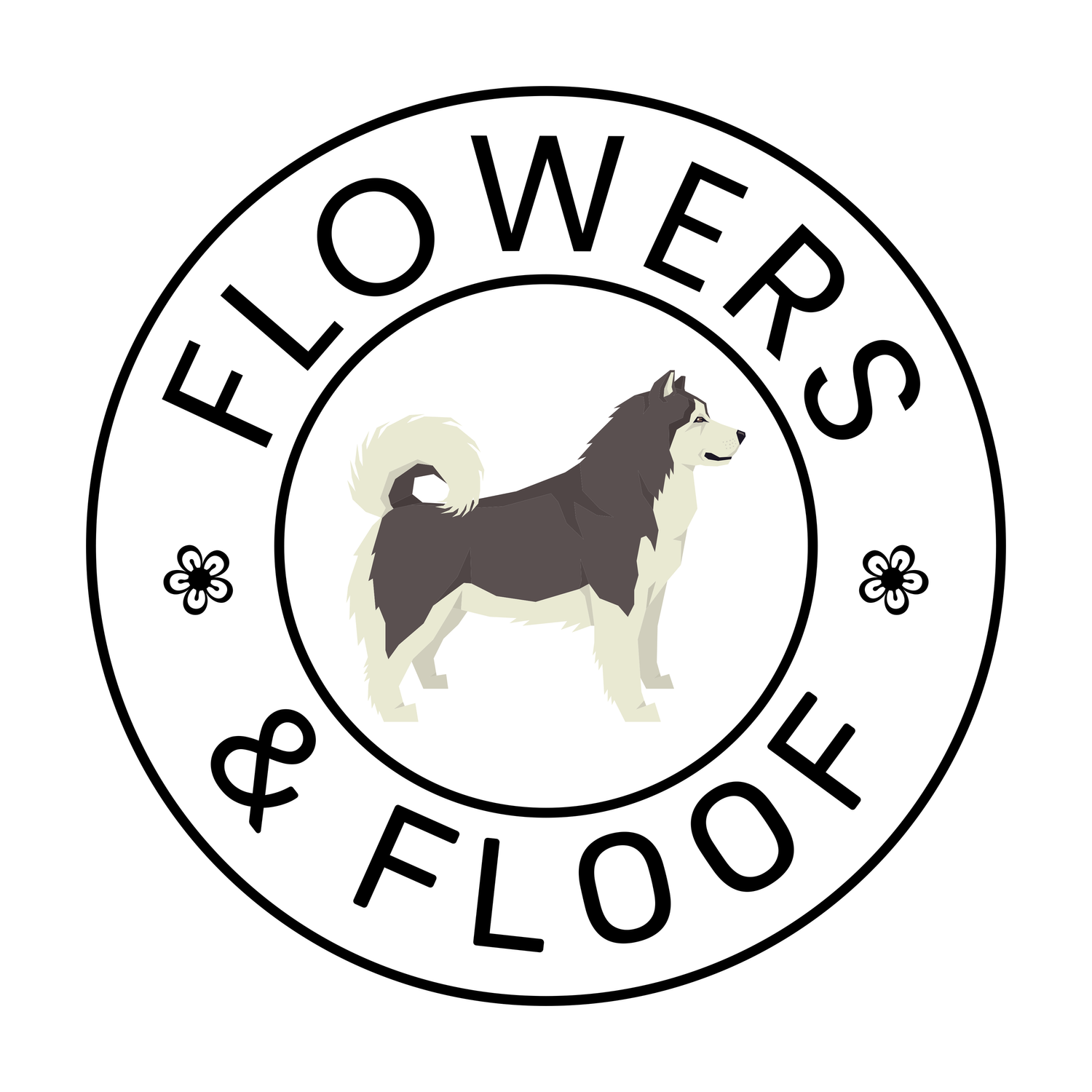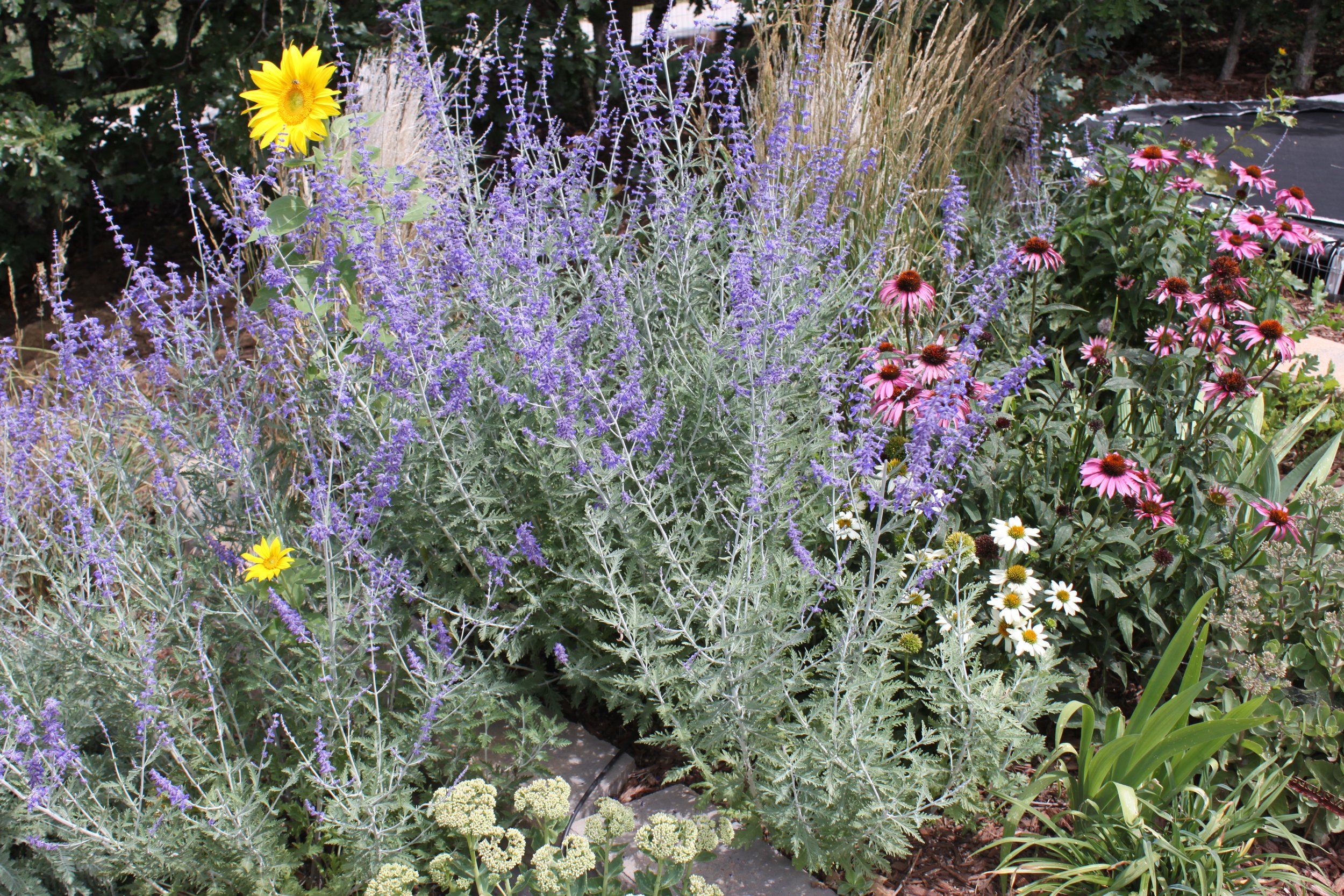Basic Flower Bed Design
It’s really challenging to keep a post like this simple as there is much to consider in landscape design. A design plan is always the best place to start, but to be honest, we start a lot of our beds on impulse: we find some beautiful plants on sale and we buy them! When we get home and admire our beautiful purchase, we are left trying to figure out a good planting location and bed design.
So, I’m limiting this post to the very practical day-to-day considerations for creating a new flowerbed: watering, weeding, mulching and edging. If you keep these things in mind, your new bed with be beautiful, and low maintenance, for years to come.
Poppies and yarrow bloom next to a bubbler fountain in a small, mulched garden bed.
Flowers bloom in a bed that uses drip irrigation, landscape stone, and mulch. If native grasses were added to cover open ground, the mulch could be eliminated and the bed would require very little maintenance.
How will you water the bed? In an ideal world, the plants you purchased are native and adapted to your environment. If that’s the case, they won’t require water after they become established. If the plants require regular water, or you live in the arid West, keep reading. You need easy access to water. Dragging a hose around, in my experience, is never a long term solution. Consider expanding your irrigation system, or adding inexpensive drip irrigation, to minimize the work and to maximize your success and enjoyment. Even on the East coast, we use a drip system for our potted plants. Well watered plants grow vigorously, resist disease, and will help crowd out weeds.
Flowers bloom in a mulched garden bed with drip irrigation.
How will you keep the bed weeded? A more practical question is, how do I minimize weeding? And the answer to that question is a good offensive plan. I am a fan of landscape fabric and rock in the West. On the East coast, you will want to use mulch, or living mulch, to keep the soil moist and to limit weeds. Planting densely (way more densely than the plant label recommends) will help shade out weeds. We are transitioning our (East coast) beds to living mulch because 1) I’m lazy and I get tired of mulching & weeding; 2) it creates much greater plant and insect diversity; and 3) it looks better! If you are creating a new flower bed, don’t amend the soil. Great quality topsoil = weeds. Your vegetable garden plants may demand amended soil, but flowers typically don’t. So save your money and time —- don’t amend your soil, don’t fertilize, and don’t water except in extreme drought. Finally, don’t disturb your soil, which causes weed seed in the ground to germinate. For example, don’t pull a weed by the root if you can simply snip it off before it goes to seed. Be lazy.
Landscape stone edging, mulch and a large stone are used in this flower bed.
How will you maintain around the bed & its border? I avoid using borders of small rocks, which look nice when built, but are difficult to maintain and impossible to weed (without herbicide or the use of living mulch). Instead, use weed-whacker friendly edging material like steel or vinyl edging, or landscape stones. Alternatively, you can simply create a grass-free “cut” to delineate between your bed and your lawn. The cut can be maintained with a weed whacker and/or herbicide. However, you will likely need to redefine the cut edge annually using a sharp shovel. Use rounded outlines for your beds so they are easy to mow and trim around.
An example of metal landscape edging in use.
How will the bed look in the winter? I usually get so focused on flowers blooming during the spring or summer I forget about all the other seasons. So, remember your bed has the potential to be beautiful year round. Over time, consider adding stones, small bushes or ornamentals that will provide winter interest, height, texture and color.
Pots, plant stands and colorful bird feeders add winter interest. Moose is waiting for his dinner to be served.
Pots, planters, grasses, colorful chairs, and stones add winter interest.
Wow, that’s a lot of information, but don’t let it overwhelm you. Doing something is always better than doing nothing, as we all learn through trial and error. Best of luck in creating your new flowerbed. And remember, the easiest way to get anything done is to enlist your significant other to do the work for you (wink wink)!







